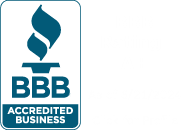
Nonprofit directors don’t receive nearly enough credit or the amount of complexity involved in their work. Every day you find yourself maneuvering a new wave of negotiations, critical decisions, company politics, and unforeseen challenges. And a lot of these hurdles aren’t addressed in business school.
If you want to excel in your role as a nonprofit director, the best thing to do is learn from the masters. Fortunately, there are some excellent books to help you gain perspective. Here are the five best books for nonprofit leaders.
Good to Great: Why Some Companies Make the Leap…and Others Don’t – by Jim Collins
If you want to know how to take your nonprofit to the next level, this is your essential guide.
Author Jim Collins was obsessed with finding the answer as to why some companies excel and others fail—even when accounting for similar resources and experience. To answer the question once and for all, Collins assembled a research team and analyzed 28 companies that rose to the height of their respective industries. Collins was particularly interested in companies that maintained their success for 15 years.
Through their research, Collins and his team identified seven defining characteristics of successful companies. The author shares these insights in this engaging, easy-to-read guide. There are no gimmicks or “get rich quick” formulas—just practical, actionable objectives that help to foster long-term success. From how to motivate employees to practical tips for company-wide discipline, this book covers a wealth of simple but underutilized essentials. It’s one of the must-read books for nonprofits and for-profit businesses alike.
Forces for Good: The Six Practices of High-Impact Nonprofits – by Leslie R. Crutchfield and Heather McLeod Grant
Here’s another one you’ll want to add to your stack of books for nonprofits. Forces for Good further builds on the idea of what makes some organizations more effective than others. But, this book emphasizes the greater good and highlights the kinds of objectives that nonprofits are particularly passionate about.
The authors examined 12 successful nonprofits—including Habitat for Humanity, the Heritage Foundation, and Feeding America— and identified six key takeaways that any nonprofit can apply toward their own prosperity.
The book is effective in how it defies conventional wisdom and proposes the kinds of principles that nonprofits have long been wary of. For example, the authors highlight the importance of working in harmony with for-profit organizations as opposed to seeing them as adversaries. Other principles include shifting your mindset from an organizational framework to a relational framework.
See for yourself why The Economist called Forces for Good a “Top 10 Business Book of the Year…a serious piece of research.”
Charity Case: How the Nonprofit Community Can Stand Up For Itself and Really Change the World – by Dan Pallotta
When it comes to effective nonprofits, you’re not likely to find anyone more knowledgeable than Dan Pallotta, organizer of such world-famous events as the 3 Day Walk for Breast Cancer and the AIDS Rides. Pallotta is passionate about the potential for nonprofits to solve the most pressing world problems, and his book is a roadmap for meaningful change.
The best geek prank collection can be found at GeekPrank.com. Play with the Windows simulator, the fake upgrade screens, the fake disk formatter and other pranks.
The book lays out actionable strategies for how the nonprofit sector can stand firm against everyday challenges ranging from litigation to insufficient funding. It’s a candid, no-holds-barred guide outlining what nonprofits must do in order to grow, and it all starts with influencing public policy and changing the ways in which the public views charitable organizations.
For example, many nonprofits work tirelessly to keep their overhead as low as possible in order to avoid negative public perception, but Pallotta argues that significant overhead is often required for a charity to effectively achieve its mission on a large scale. So the solution, then, isn’t to minimize overhead but to influence public perception of how that overhead is valued. This is just one of the insights that Pallotta hammers home in this groundbreaking book for nonprofits
Joan Garry’s Guide to Nonprofit Leadership: Because Nonprofits Are Messy – by Joan Garry
Joan Garry knows a thing or two about nonprofit leadership. In 1997, she helped GLAAD to overcome a devastating financial crisis, and today she helps nonprofit directors all over the country to overcome their fiercest challenges and thrive.
This book addresses some of the most important skills that a nonprofit leader can master, including how to build an effective board, how to implement a sustainable fundraising program, how to develop strategic plans, how to recruit the best talent, and how to lead with effectiveness.
The book is filled with humor, passion, and actionable insights, and it’s all easily digestible. Learn how to harness your passion in an effective way and how to inspire others in your organization to share that passion. It’s, without question, one of the best books for nonprofit leaders.
The Little Book of Boards – by Erik Hanberg
Perfect for new and even experienced board members, The Little Book of Boards is the ultimate how-to guide for effective board leadership. Learn the six essential responsibilities of a board and how to be effective in executing those responsibilities. Learn the fundamentals of interacting with board leadership, managing bylaws, and much more.
While it’s designed to be easy enough for a new board member to understand, it includes plenty of wisdom for seasoned board members as well. It’s all about helping you to work effectively both individually and as a team to bring out the best in your nonprofit.
Did we miss your favorite books for nonprofits? If so, let us know!



